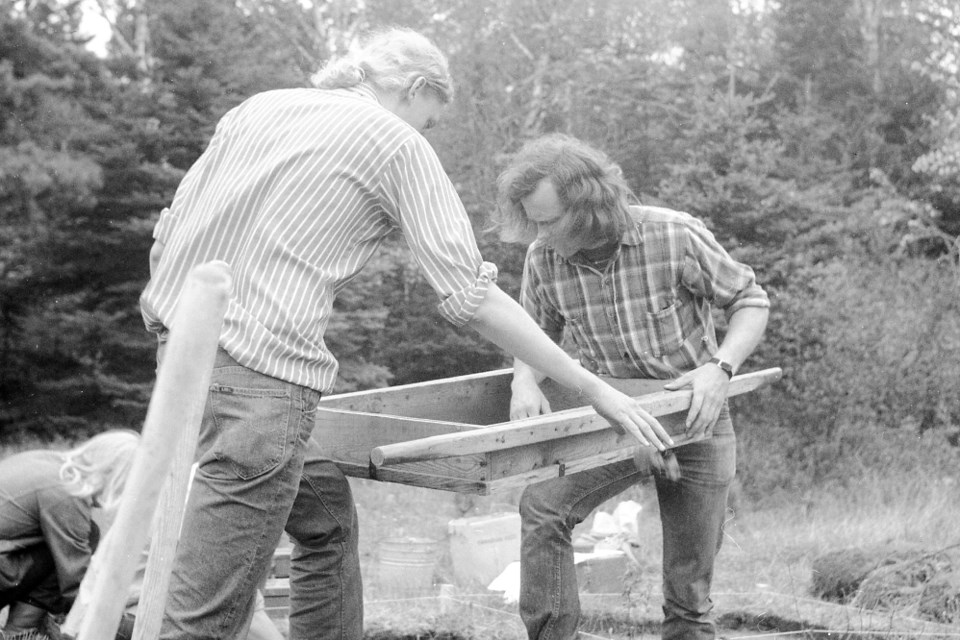It is said that Archaeology is a blend of mystery, romance and adventure!
Archaeologists are interested in the preservation of heritage sites. Citizens in the Algoma area might remember the name A. W. (Thor) Conway.
As a young man, Thor was a tall, curly-haired fellow, who had a passion for uncovering history. During the 1970s and 80s, Thor was the regional archaeologist for the Ministry of Culture and Recreation and was the Director of Archaeological Sites from North Bay to Wawa.
While in Algoma he expressed his interest in any aspect of heritage in Ontario. In his book titled, Archaeology in Northeastern Ontario, Thor Conway states that “he is mesmerized by three topics of Ontario archeology that dominate this region: the nine thousand years of prehistoric Indian sites; the remains of the fur trade era; and the ancient cliff paintings that are found on its lakes and rivers.
During his time as an archaeologist, he expressed that the unique difference about archeology in Northern Ontario is that “there are still living ties to the past and when conducting digs, it felt as though life was breathed into their archaeological finds. In addition to each dimension that a dig creates, is the pure joy of finding pieces of the area’s history!”
At that time, the government had put money into Ontario archaeology giving the go-ahead for local exploration.
In total, 18 field projects were being explored throughout Ontario. While serving his time with the ministry, Thor Conway explored many areas, some of which included Gros Cap, Point Aux Pins, Kinsmen Park, Thessalon, Manitoulin Island and the North Shore of Lake Superior
In 1973, Thor Conway was accompanied by six other crew members and three students from Laurentian University who were given the opportunity to explore the history of Lake Superior Provincial Park.
With the financial support of the Ministry of Natural Resources, his accompanying crew, and oftentimes his artist-wife, Julie (Matey) Conway embarked on the challenge of learning the park’s 600 square miles of rugged terrain. The park located on Lake Superior was the route travelled by Indigenous peoples, explorers and traders.
Upon visiting the team at the park, Sault Star journalists found the archaeology crew exploring a field along the lakeshore just south of the Agawa River. They were informed that it was once the site of a fishing village at the turn of the century, and a trading post in the 1800s.
Prior to the 1700s, the archaeologists reported that it was the site of a prehistoric Indian village, perhaps 1,000 years old. A 4,000-year-old stone axe head, flint tools, utensils, and a slate chopping tool were just a few of the items that were discovered.
Indian artifacts including copper and bone tools, arrowheads and clay cooking pots. A clay pipe made in 1835 (made in Glasgow) was unearthed too.
From the 1830s-1880s, the Hudson Bay Company operated it as an outpost of the Michipicoten Station. Artifacts of British influence were also found in the area.
They unearthed items such as a trade bead and a musket ball likely from the British during the late 1700s and early 19th century. There were other intriguing items found like shreds of Ojibwe and European pottery. Every find was painstakingly catalogued with accuracy.
At Agawa Bay were the remains of a Hudson’s Bay fur trading post which included six associated buildings, including the factor’s and Indigenous Peoples’ cabins and the blacksmith’s shop.
Throughout Lake Superior Provincial Park and the entire Algoma region, Conway and the other workers, travelled by boat, train, canoe and on foot, while they explored and spoke with area residents. In a Sault Star article dated October 1974, he is quoted as saying, “most people do not realize the Indians have been here for 11,000 years and most people aren’t aware of the sophistication required to survive off this land!”
